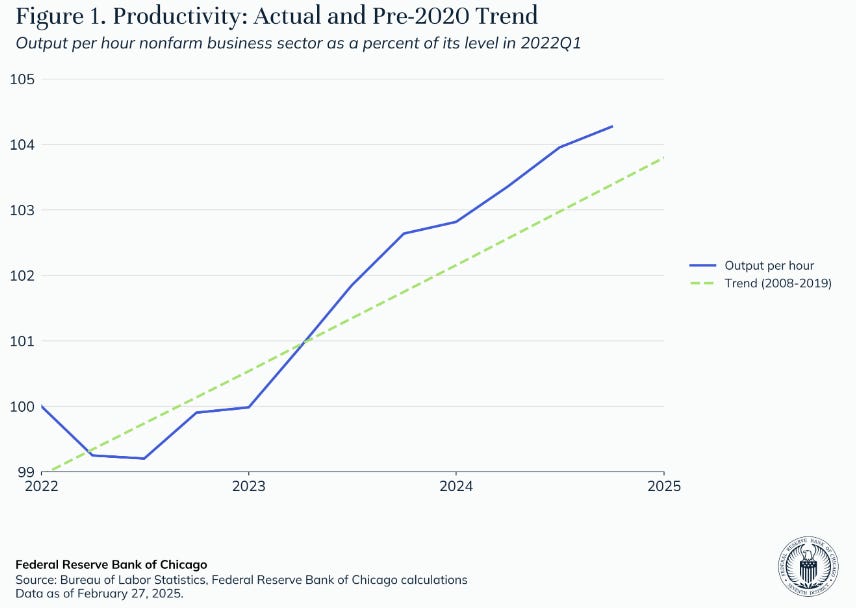✨ The Age of AI: Today? Tomorrow? When?
Slowly, slowly, slowly, bits of economic evidence are emerging ...
When will artificial intelligence begin to reshape the American and global economies? It’s a multi-trillion-dollar question. Economists, true to form, will likely be the last folks to declare a revolutionary Age of AI finally at hand.
Economic history reveals a familiar pattern that explains this scholarly hesitation: Productivity gains from transformative technologies — from electrification to computers — typically manifest in statistics (and those stats are volatile) long after their practical, real-world impacts becomes evident elsewhere. The profession, thankfully wedded to empirical rigor, maintains a stubborn reluctance to pronounce seismic economic shifts without robust quantitative evidence. This caution stands in stark contrast to technologists and CEOs who are far more willing to forecast a technological tsunami of change fast approaching.
Silicon Valley predicts supersmart AI will allow us to, say, cure cancer and Alzheimer's. Economists predict supersmart AI will allow doctors to spend less time taking and organizing notes during patient exams. You get the picture.
And among economists, those working for the Federal Reserve might be the most cautious of all. That’s why I took note of an intriguing speech recently given by economist Austan Goolsbee, president of the Federal Reserve Bank of Chicago, at the Stanford Institute for Economic Policy Research. Pointing out that US productivity growth since late 2022 has notably outpaced pre-pandemic trends, Goolsbee gently suggested that generative AI and other technologies might be the driving force behind this welcome acceleration.
Four theories have emerged for the outperformance, as cited by Goolsbee. Three suggest the surge is temporary: the rise of remote work, better worker-job matching following the Great Resignation, and increased entrepreneurial activity. Each would provide a one-off boost to productivity levels rather than a sustained increase in the growth rate.
But that fourth theory? Well, here’s Goolsbee:
Keep reading with a 7-day free trial
Subscribe to Faster, Please! to keep reading this post and get 7 days of free access to the full post archives.



